Table of Contents
ToggleEssential Tips on Optimizing WordPress Performance and Security
WordPress is one of the most popular website building platforms in the world, but it can also be prone to problems. If your WordPress website is running slow, experiencing errors, or has been hacked, it’s time to take action. In this article, we’ll discuss some essential tips for fixing your WordPress website and how to optimizing its performance and security.
1. Update WordPress latest version, Theme and Plugins
Outdated software is one of the main causes of security vulnerabilities and performance issues on WordPress websites. To fix your website, be sure to update WordPress to the latest version, as well as all installed plugins and themes. This will ensure that your website is protected from known security threats and is running on the most recent and optimized software.
There are tree ways to update the themes and plugins:
- In the WordPress dashboard, go to update > scroll down> select all > click on update plugins.
 scroll down> select all > click on update plugins.
scroll down> select all > click on update plugins.
The plugin’s upgrade can take some time. After that the update process should be complete.
You can bulk update your plugins by visiting your WordPress dashboard, go to Plugins > Installed Plugins.
 This is a WordPress page that lists all plugins installed on our website. Read more about the updated version of the plugin. Below each plugin that has an available update, you’ll see a yellow box that says “A new version of [plugin] is available.” It is recommended to review the changes made in the update before applying the update plugin.
This is a WordPress page that lists all plugins installed on our website. Read more about the updated version of the plugin. Below each plugin that has an available update, you’ll see a yellow box that says “A new version of [plugin] is available.” It is recommended to review the changes made in the update before applying the update plugin. 
Click “Update Now” when you are ready to update the plugin. It may take some time to update the plugin. If you are updating multiple plugins, wait until the current plugin update completes before updating the next plugin.
Alternatively, you can update plugins in bulk. Instead of updating one at a time, you can update plugins in bulk. On the Installed Plugins page, select the checkbox next to each plugin. Select Update from the Bulk Action drop-down list and click Apply.

- Alternatively, you can upload latest version of the plugin and replace old plugins to your site.
Fast of all Download the latest version of plugin .zip file from WordPress official repository or developer company website.
Then go to your WordPress dashboard to Plugins > Installed Plugins> Add New

Than click the upload plugin > choose file >

after that select the file and click to open button.

Then click the install now button
 After that the plugin may take some time to installing to update. Please be patience while it’s uploading and replace the old plugin files.
After that the plugin may take some time to installing to update. Please be patience while it’s uploading and replace the old plugin files.
2. Clean Up Your WordPress Database to optimize the performance.
Over time, your WordPress database can become cluttered with junk data, such as post revisions, trashed posts, and spam comments. This junk data can slow down your website and take up valuable space on your server. Use a plugin like WP-Optimize to clean up your database and improve website performance.
Here we’ll discuss a short tutorial about how to optimizing WordPress database with free plugins or manually.
Optimizing WordPress database with free plugins
In this tutorial, we’ll use WP-Optimize, a comprehensive solution that includes site caching, image compression, and database cleaning tools. It’s also free (with some premium options).
After installing and activating the plugin, go to WP-Optimize → Database in your WordPress dashboard. Under the Optimization heading, you can select which parts of the database to clean up.
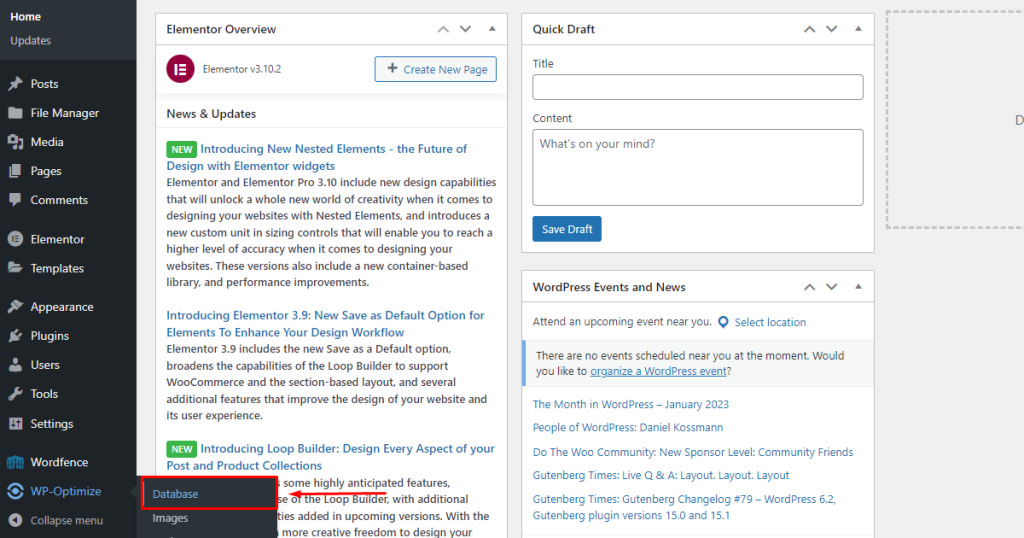
WP-Optimize can delete the following data:
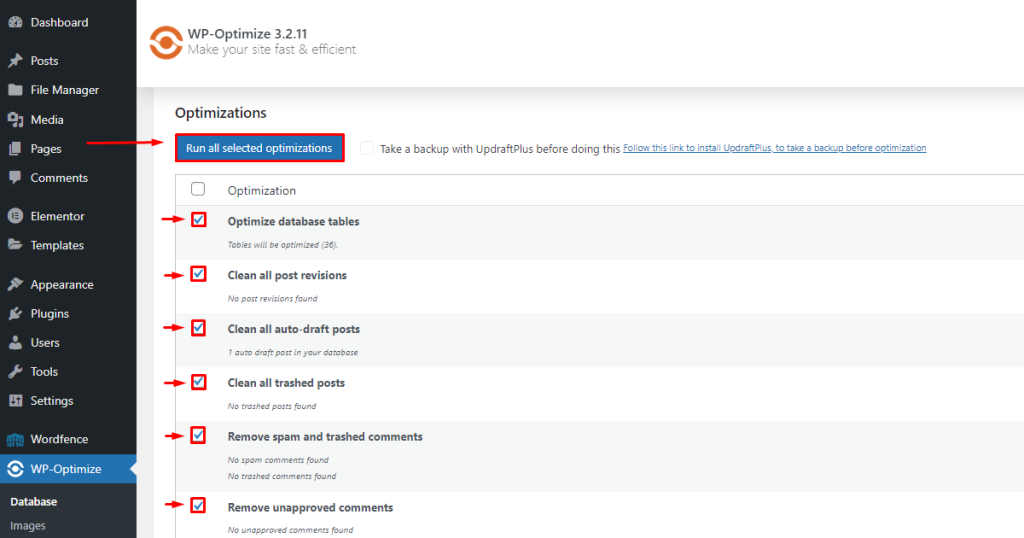
Warning: If you don’t have enough knowledge of database of WordPress, please contact us to optimize your sites. Our expert team will fix everything.
Click to the check box and select to following data:
Optimize database tables
Clean all post revisions
Clean all auto-draft posts
Clean all trashed posts
Remove spam and trashed comments
Remove unapproved comments
Then select Run optimization next to the appropriate action.
You can also click “Run all selected optimizations” at the top of the page after checking the box next to each adjustment you want to run.
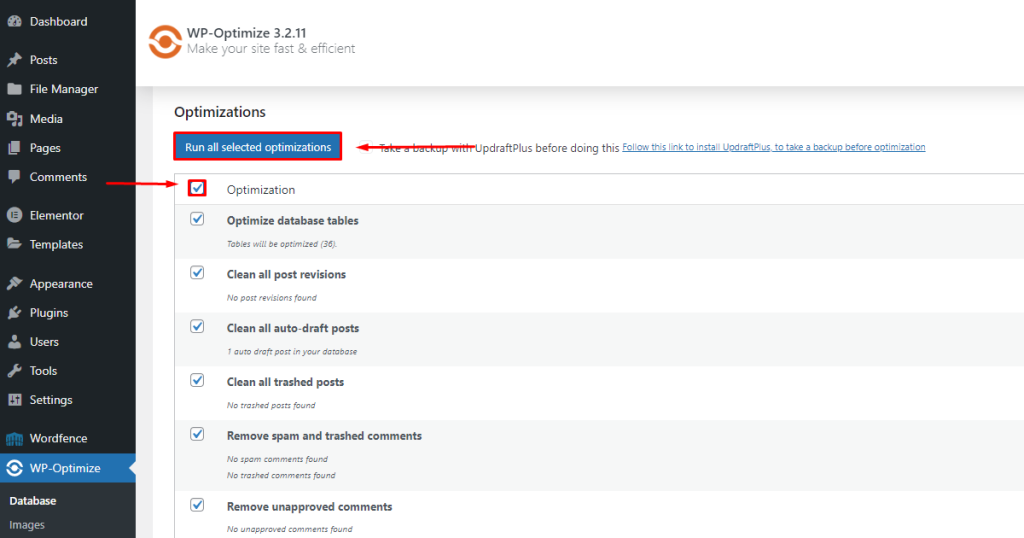
Some actions have an exclamation point next to them. These indicate that database tuning is dangerous and can lead to data corruption.
Clean up your WordPress database manually with phpMyAdmin
Additionally, you can manually clean up your WordPress database using phpMyAdmin. This method is a bit more involved as it requires you to use cPanel in your hosting provider’s dashboard, but it gives you complete control over the process. Please note that the steps below may vary depending on your particular hosting provider.
Log into your hosting account, open cPanel → phpMyAdmin, and click Databases.
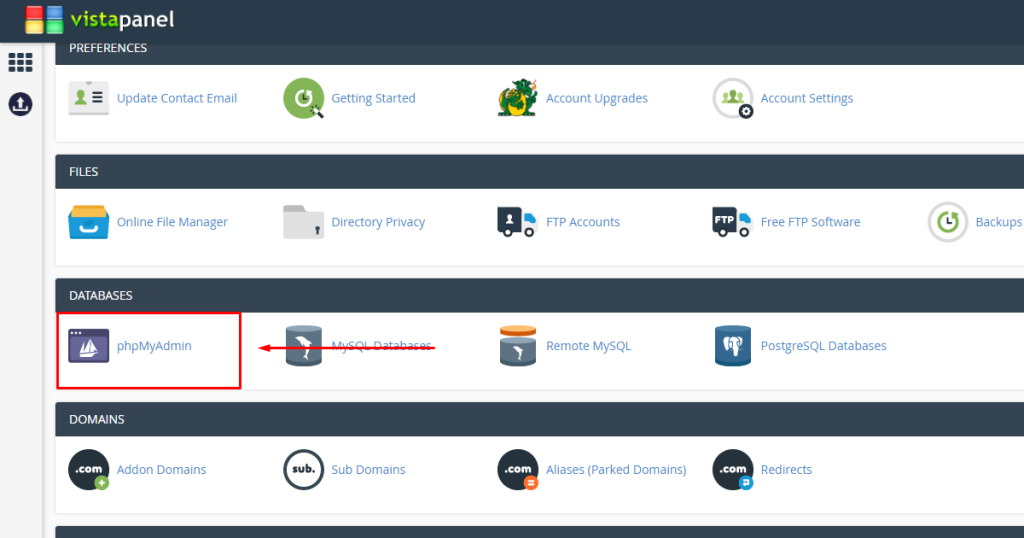
Select your database from the menu that appears. You will see a list of all the tables in your WordPress database.
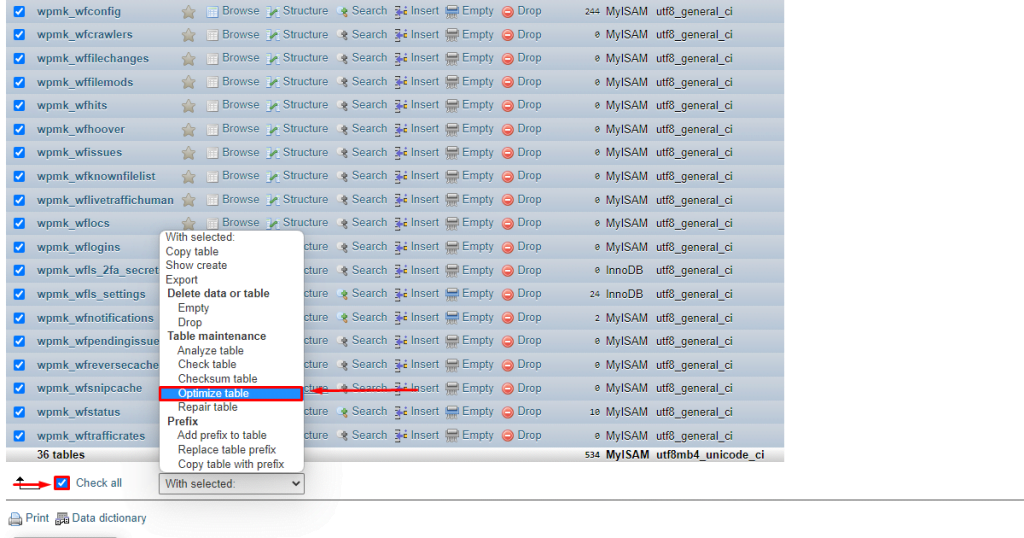
Select the table to clean. You can also scroll to the bottom of the page and check the Check All box. Then, under Table Maintenance, click Optimize Table. Wait a few seconds for the database optimization to complete. then you will see a success message.
3. Optimize your images for WordPress website optimizations.
Large images can slow down your website and affect your user experience and search engine rankings. To resolve this issue, optimize all images before uploading them to your website. Use a plugin like Smush to automatically enhance your images, or use software like Photoshop or Canva to manually compress your images. This tutorial describes some possibilities
Compress and upload WordPress Images with free online image optimizer.
Compressing an image can reduce the file size. Compressed image files will load faster on your WordPress website and increase speed. Large images can be compressed manually using image editing software or free tools like TinyPNG before uploading to WordPress.
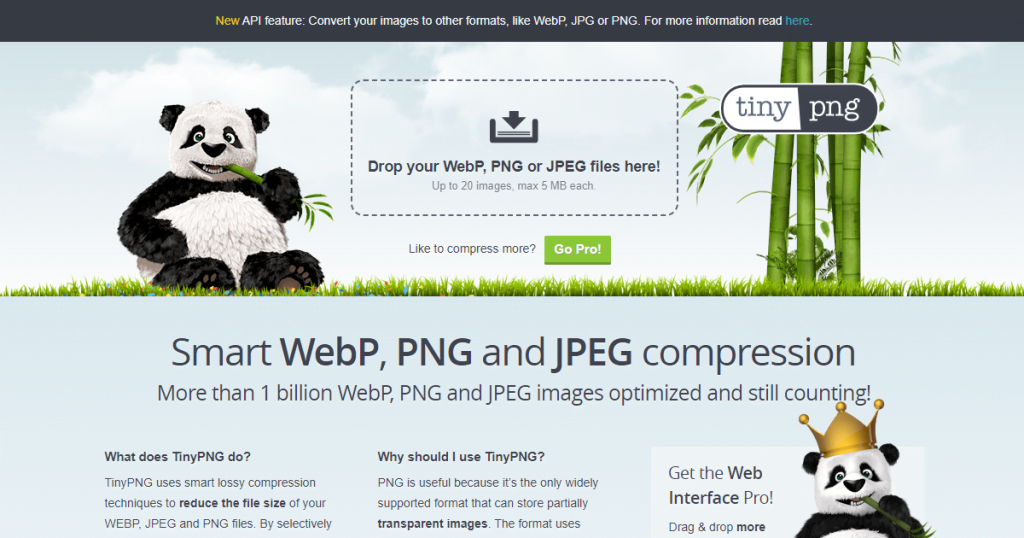
TinyPNG does not only accept PNG images. Works with other image file formats such as WebP and JPEG. Just upload the image you want to compress and the tool will reduce its size. This tool can also compress multiple files at once.
Change image size
Another way to optimize your images for WordPress is to change their pixel size. Luckily, this functionality is built into WordPress core.
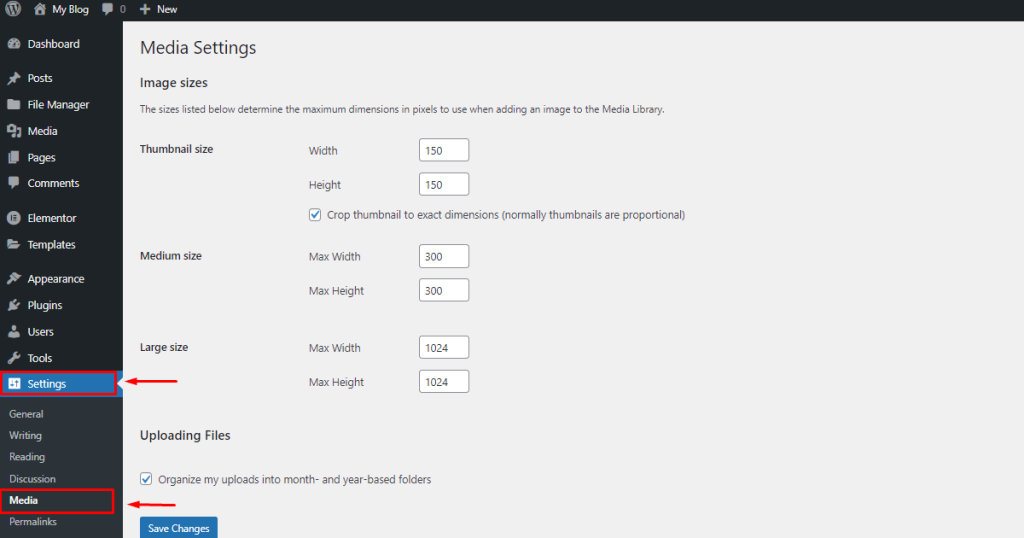
By default WordPress uses 4 different sizes of the same image.
- Thumbnail (150 x 150 pixels)
- Medium (up to 300 x 300 pixels)
- Large (up to 1024 x 1024 pixels)
- Full size (original image size)
This means you can customize it to your liking.
To change the default WordPress image size via the media library:
Open your WordPress dashboard and go to Settings -> Media.
Enter the desired maximum width and height for each size. Click Save changes.
WordPress image size settings.
Serve Images Through a CDN
A Content Delivery Network (CDN) is a globally distributed system of edge servers that enable rapid delivery of website content such as images, videos, CSS, and JavaScript. When your WordPress website uses a CDN, copies of your image are distributed from your origin server to edge servers around the world. The edge server closest to the visitor serves the image. Common WordPress CDN providers include Cloudflare, KeyCDN, and Sucuri.
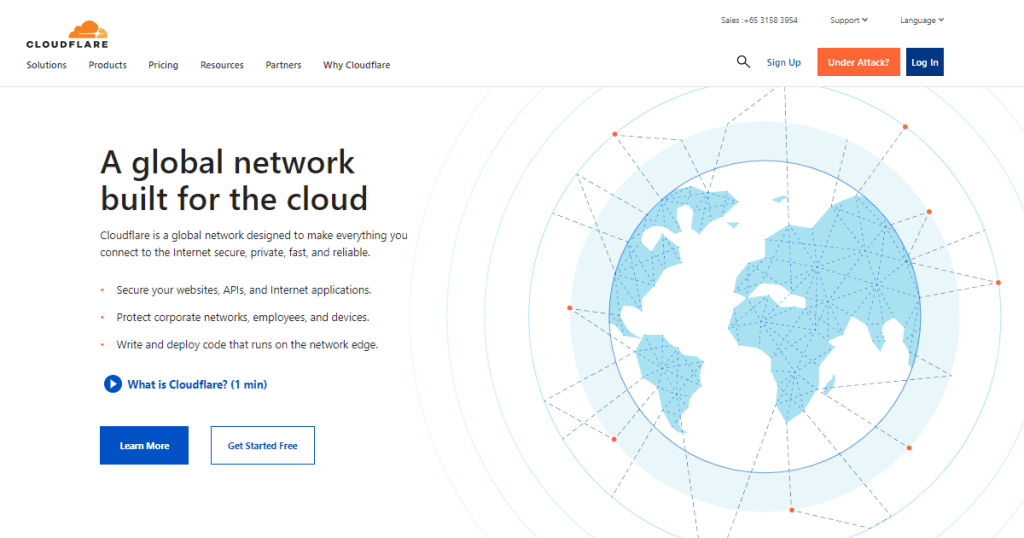
4. Clean up your WordPress media library
As your WordPress site grows, its media library accumulates many uploaded images. Many of these uploaded images are displayed on the website, but many of them may not be used. For example, images from deleted blog posts remain in the media library. There are many free WordPress plugins to clean your media library such as Media Cleaner, WPS Cleaner, Litespeed Cache.
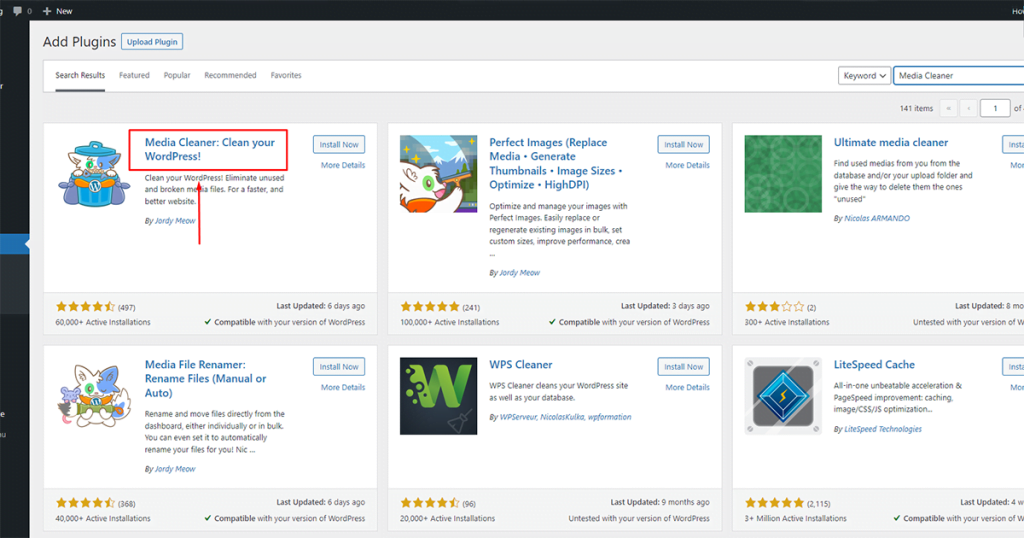
5. Implement strict security measures for WordPress website security.
Securing your WordPress website is essential to protecting your data and your users’ information. Use strong passwords, limit login attempts, and use security plugins like Wordfence and iThemes Security to protect your website from hacks and malware.
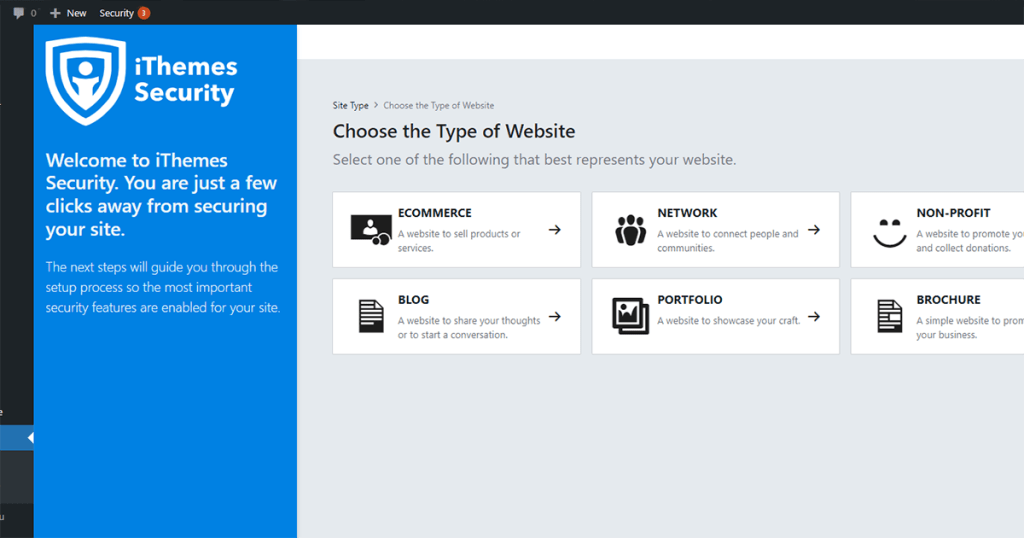
In conclusion, fixing your WordPress website is essential for optimal performance and security. By updating software, cleaning up your database, optimizing images, using a caching plugin, and implementing strong security measures, you can ensure that your website is fast, secure, and functioning at its best.”
Share this:
- Click to share on X (Opens in new window) X
- Click to share on Facebook (Opens in new window) Facebook
- Click to share on WhatsApp (Opens in new window) WhatsApp
- Click to share on Telegram (Opens in new window) Telegram
- Click to share on LinkedIn (Opens in new window) LinkedIn
- More
- Click to share on Tumblr (Opens in new window) Tumblr
- Click to share on Pinterest (Opens in new window) Pinterest
- Click to share on Reddit (Opens in new window) Reddit
- Click to share on Pocket (Opens in new window) Pocket
- Click to email a link to a friend (Opens in new window) Email
- Click to print (Opens in new window) Print

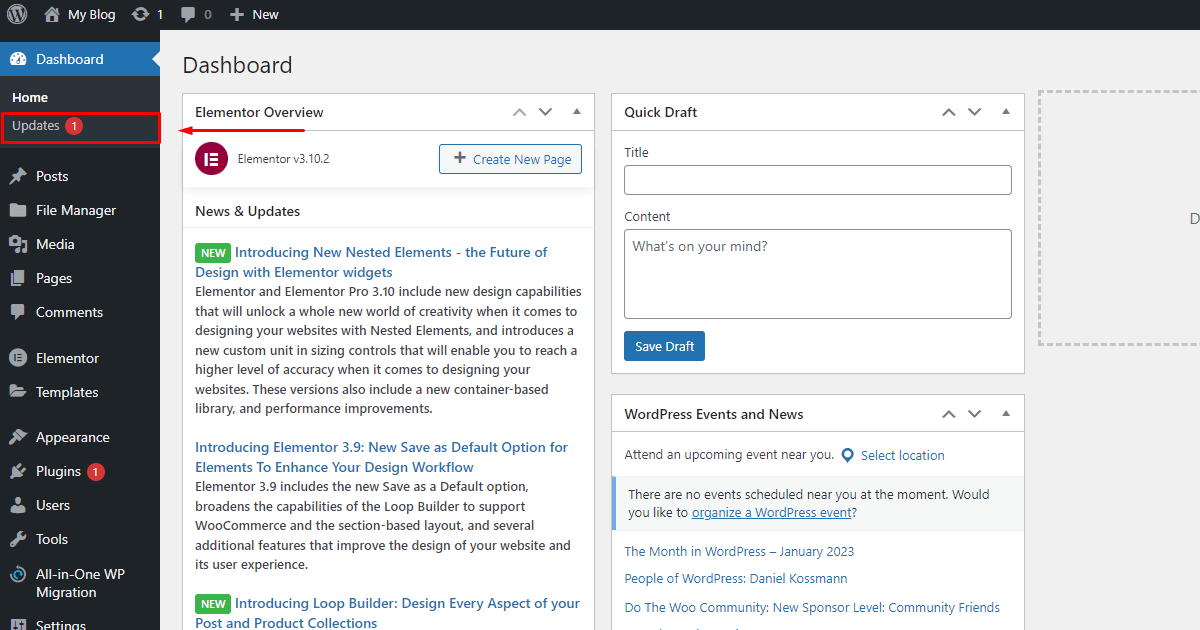 scroll down> select all > click on update plugins.
scroll down> select all > click on update plugins.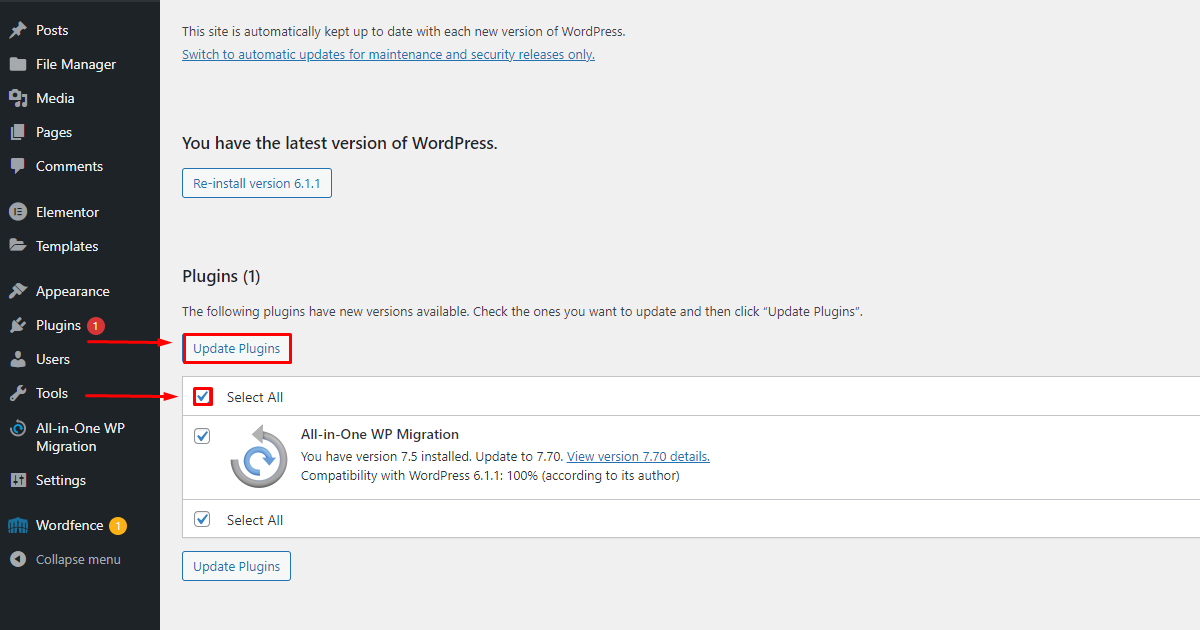
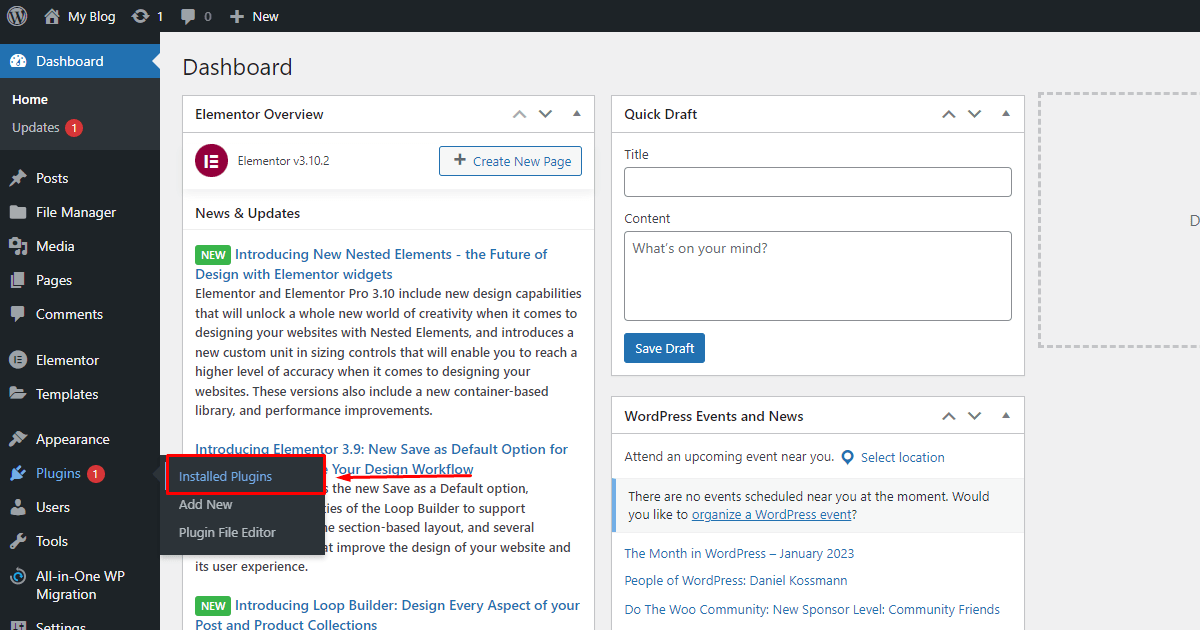 This is a WordPress page that lists all plugins installed on our website. Read more about the updated version of the plugin. Below each plugin that has an available update, you’ll see a yellow box that says “A new version of [plugin] is available.” It is recommended to review the changes made in the update before applying the update plugin.
This is a WordPress page that lists all plugins installed on our website. Read more about the updated version of the plugin. Below each plugin that has an available update, you’ll see a yellow box that says “A new version of [plugin] is available.” It is recommended to review the changes made in the update before applying the update plugin. 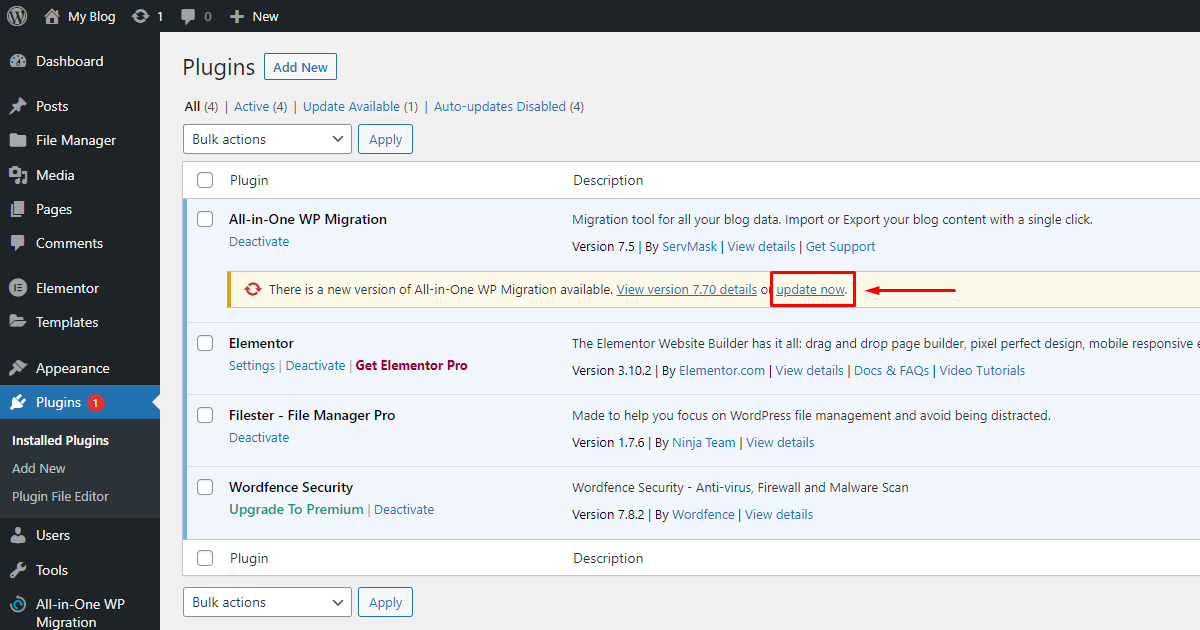
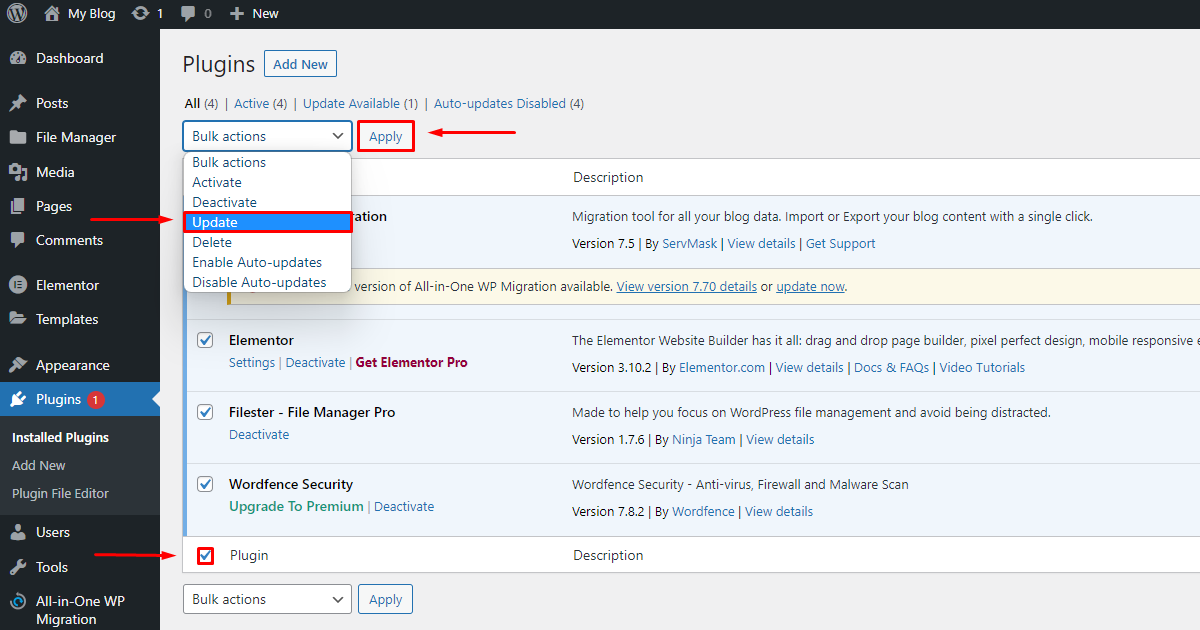
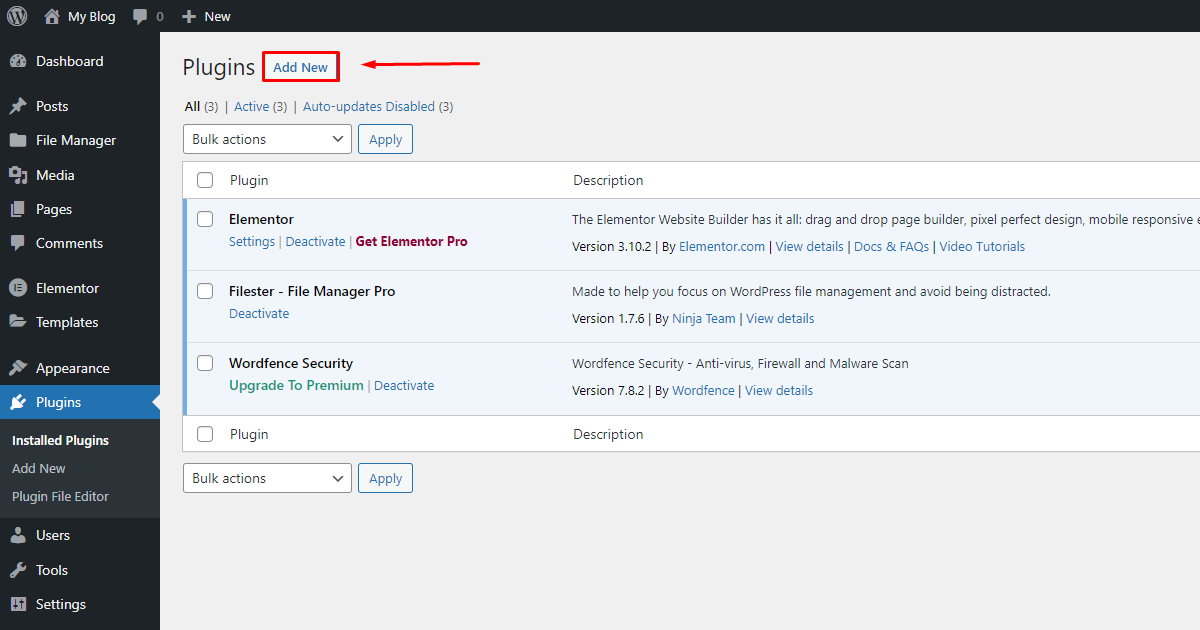
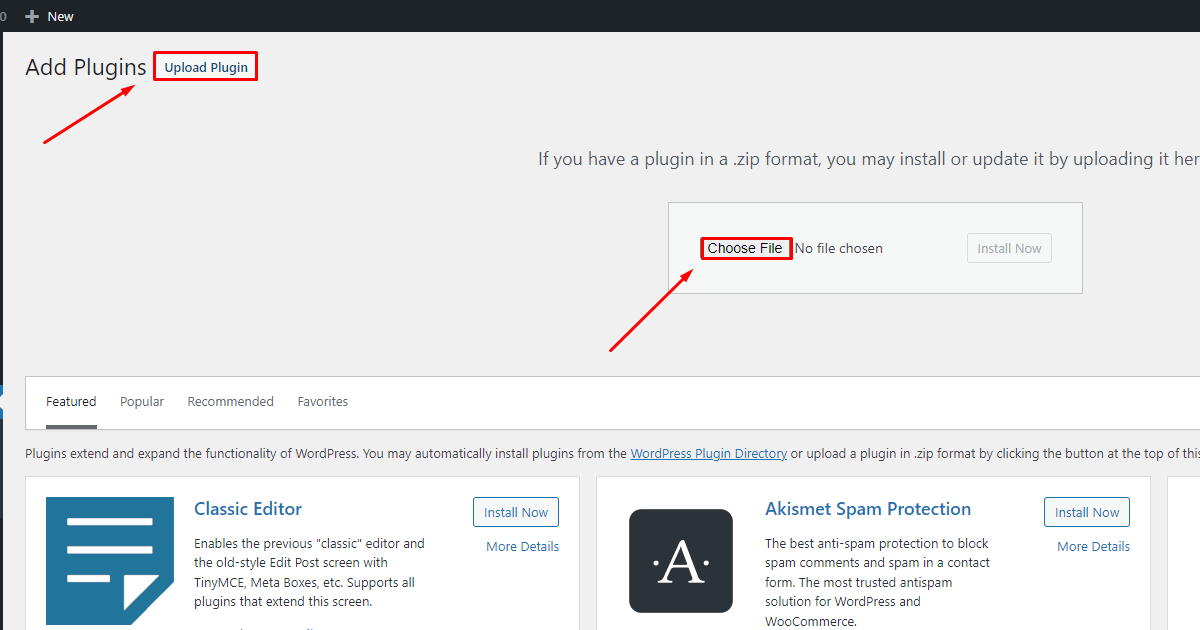
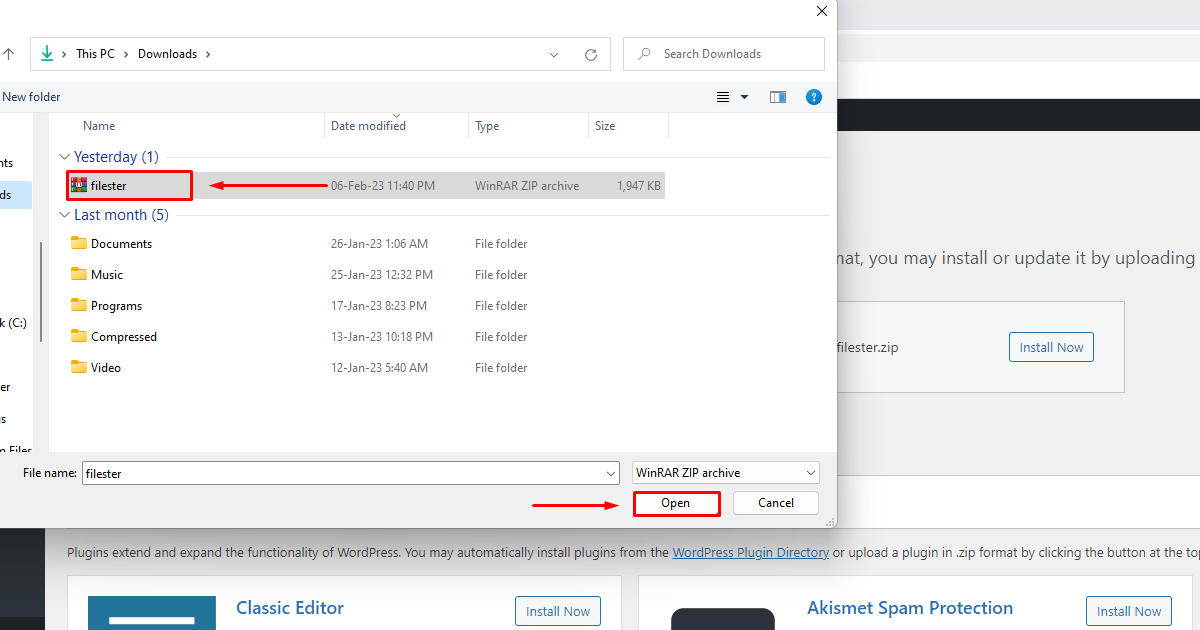
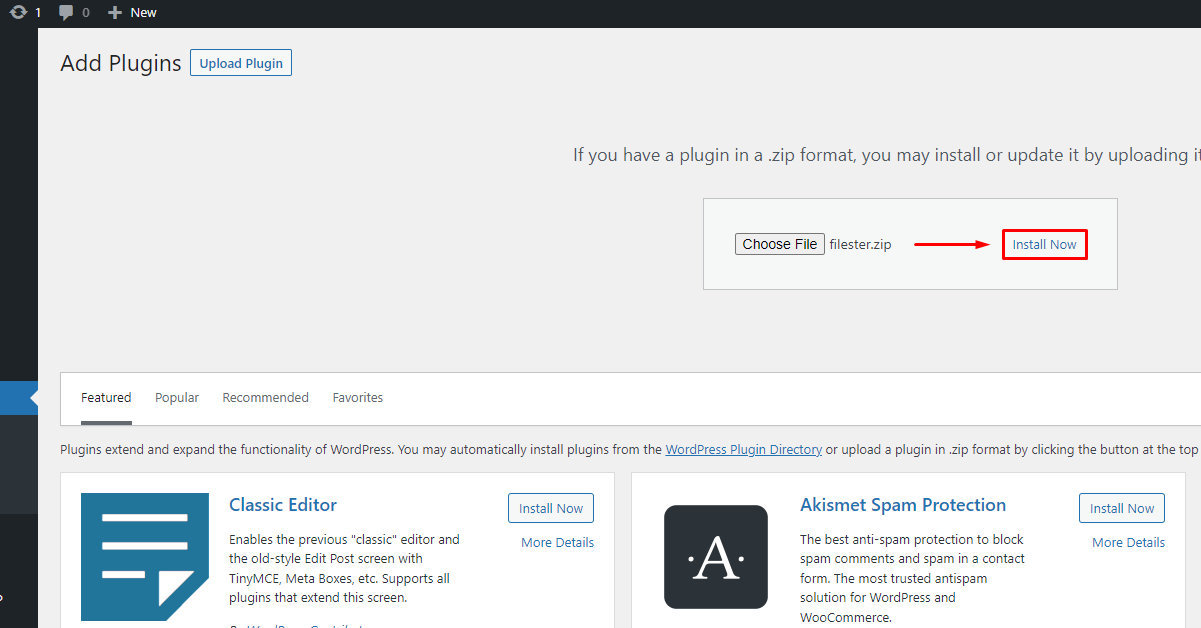 After that the plugin may take some time to installing to update. Please be patience while it’s uploading and replace the old plugin files.
After that the plugin may take some time to installing to update. Please be patience while it’s uploading and replace the old plugin files.